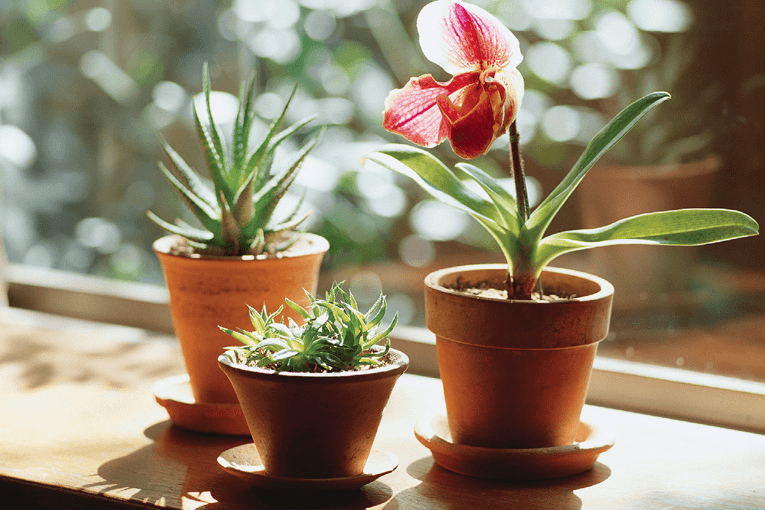[Ebook Việt hóa] The Houseplant Handbook: Basic Growing Techniques and a Directory of 300 Everyday Houseplants
[Ebook Việt Hoá] 300 Everyday Houseplants: Light and Warmth (Ánh sáng và Độ ấm)
- Nguồn: [Ebook] The Houseplant Handbook: Basic Growing Techniques and a Directory of 300 Everyday Houseplants – David Squire
- Biên tập: Dũng Cá Xinh (Tháng 02/2022)
- Dịch: Team Codai.net
English

Light and Warmth
Sunlight is essential for plants to grow, and it must be in balance with temperature. In the wild, these are usually in harmony: as light intensity rises, so does the temperature. However, in homes—especially in winter—the temperature may be high but the light intensity low. Adjustments can be made to the temperature, but the temperature is usually selected to suit people rather than plants.
- The intensity of light varies from one season to another, as well as throughout the day. In the plant directory in Part Two, the amount of light needed in winter and summer is indicated for each plant.
- Light intensity rapidly decreases as distance from a window increases. The amount of illumination at 8ft (2.4m) from a window is 5–10% of that of the light reaching a windowsill.
- Temperatures vary throughout the year; those to suit plants in winter and summer are indicated in the individual listings in Part Two.
- In general, flowering houseplants need more light than those grown mainly for their foliage, while cacti require good light at all times.
- Plants should not be moved suddenly from dull light to strong light.
- Keep windows clean, especially during winter when light intensity is low. In summer, sheer curtains help to diffuse strong sunlight.
- Rooms decorated in light colors reflect more light than dark shades—a major benefit in winter.
- Leaves and stems soon turn toward the light source, causing distortion. Counteract this by turning plants a quarter of a turn every few days.
- In winter, plants close to windows may receive good light but be exposed to drafts from ill-fitting window frames, causing flower buds to fall off.
Tiếng Việt
Đang cập nhật
Xem thêm các phần khác của sách
![[Ebook Việt Hoá] 300 Everyday Houseplants: Light and Warmth (Ánh sáng và Độ ấm) [Ebook Việt Hoá] 300 Everyday Houseplants: Light and Warmth (Ánh sáng và Độ ấm)](https://vn1.vdrive.vn/codai.net/2021/02/ebooks-300-houseplants-202-dudder-grass-maidenhair-fern.jpg)


